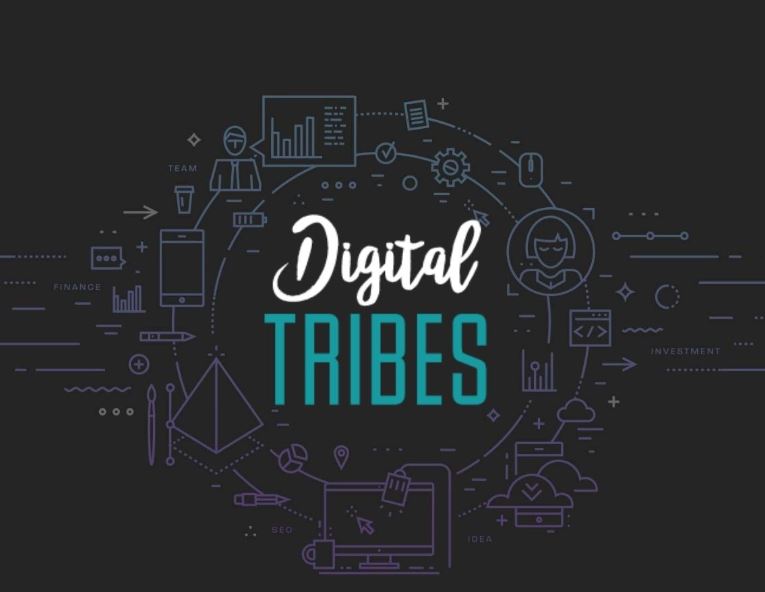Introduction:
Online communities have transformed the way people interact, connect, and share ideas in the digital age. These virtual spaces, often referred to as digital tribes, are built around shared interests, values, or goals. They have created new opportunities for collaboration, innovation, and social bonding that transcend geographical boundaries. Unlike traditional communities, digital tribes operate on the principles of inclusivity and accessibility, allowing people from diverse backgrounds to unite under common causes.
Understanding the psychology of online communities is vital for businesses, influencers, and marketers looking to engage effectively in the digital landscape. Digital tribes thrive on trust, mutual respect, and shared experiences. This deep psychological connection often determines the success of a brand or movement within these communities. By exploring the dynamics of digital tribes, one can uncover valuable insights into what drives engagement and loyalty in the virtual realm.
How online communities are built:
Creating a sense of belonging:
Successful online communities often begin with a strong sense of belonging. This is cultivated by providing members with platforms to express their individuality while connecting with like-minded individuals. Digital tribes thrive when members feel valued and acknowledged for their contributions, fostering a culture of inclusivity and acceptance.
Building trust is another critical element. Trust enables members to share personal stories, seek advice, and engage in meaningful discussions without fear of judgment. This shared trust cements the community’s foundation, making it resilient to external disruptions or conflicts.
Characteristics of thriving digital tribes:
Thriving online communities exhibit several distinct characteristics. First, they possess a clear purpose that resonates with their audience. Whether centered around a hobby, profession, or social cause, the community’s purpose acts as a magnet that attracts and retains members.
Second, effective communication within the group strengthens bonds. From regular updates to interactive discussions, open communication channels encourage transparency and foster mutual understanding. This makes it easier for members to align with the group’s objectives and actively participate in its growth.
The role of leadership in online communities:
Understanding leadership styles in digital tribes:
Leaders play a pivotal role in shaping the culture and trajectory of online communities. They act as facilitators, ensuring that all voices are heard and respected. A collaborative leadership style encourages members to take ownership of the community’s initiatives, leading to greater engagement and commitment.
Authoritative leaders, on the other hand, might set strict rules and boundaries to maintain order and focus. While this approach can work for certain types of digital tribes, it often limits creative freedom and participation. Balancing authority and collaboration is key to effective community leadership.
Influencing community behavior:
Leaders influence the overall behavior of a digital tribe through their actions and decisions. By modeling the desired values and ethics, they set the standard for acceptable conduct within the community. This not only ensures harmony but also strengthens the group’s identity.
Leaders also serve as mediators during conflicts. By resolving disputes fairly and transparently, they maintain the group’s cohesion and trust. Their ability to inspire and motivate members often determines the long-term success of the digital tribe.
Also Read: How Does Culture Affect Communication?
Psychological motivations behind joining digital tribes:
The search for connection:
Many individuals join online communities to fulfill their innate desire for connection. Digital tribes offer a space where people can engage in meaningful interactions, share experiences, and build friendships. This sense of belonging reduces feelings of isolation and enhances overall well-being.
Additionally, digital tribes provide opportunities for self-expression. Members can showcase their skills, opinions, and creativity, receiving validation from their peers. This recognition boosts self-esteem and motivates further participation within the community.
The quest for knowledge:
Another powerful motivator is the pursuit of knowledge. Online communities often act as hubs of information where members can learn new skills, stay updated on trends, and access expert advice. For instance, individuals exploring niche markets like the Web3 industry might engage with a kol network marketing agency to navigate complex digital ecosystems effectively.
This shared knowledge not only empowers members but also fosters a culture of growth and innovation. Members become more invested in the community as they realize its value in enhancing their personal and professional lives.
Benefits of engaging with digital tribes:
Personal growth and empowerment:
Engaging with online communities enables individuals to develop new perspectives and skills. Through constructive discussions and collaborative projects, members gain insights that broaden their horizons. This sense of growth is particularly empowering, as it equips individuals to overcome challenges and achieve their goals.
Moreover, digital tribes often provide emotional support. Members rally around one another during difficult times, offering encouragement and advice. This collective empathy creates a strong sense of unity and belonging.
Professional opportunities:
For professionals and entrepreneurs, online communities can be a valuable resource. Networking within these spaces often leads to collaborations, mentorship, and job opportunities. Businesses can also leverage digital tribes to reach their target audience more effectively, as these communities are often highly engaged and loyal.
By partnering with an agency, businesses can connect with influencers who understand the nuances of digital tribes. This ensures that marketing efforts are not only authentic but also aligned with the community’s values, enhancing brand credibility and trust.
Challenges in managing online communities:
Maintaining engagement levels:
One of the biggest challenges in managing online communities is sustaining member engagement. As interests evolve, some members may lose interest or become inactive. To address this, community leaders must continuously introduce fresh content and activities that align with the group’s interests.
Additionally, balancing inclusivity with exclusivity can be tricky. While welcoming new members is essential, ensuring that existing members feel valued and included is equally important. Striking this balance requires careful planning and execution.
Dealing with conflicts:
Conflicts are inevitable in any group setting, and online communities are no exception. Differences in opinions, misunderstandings, and personal biases can lead to disagreements. Effective conflict resolution strategies, such as open dialogue and mediation, are crucial for maintaining harmony within the group.
Leaders must also be vigilant against toxic behavior, such as trolling or cyberbullying. Implementing clear guidelines and enforcing them consistently can help protect the community from such issues, ensuring a safe and supportive environment for all members.
Conclusion:
Digital tribes have redefined the way people connect, collaborate, and grow in the virtual world. By understanding the psychology behind online communities, individuals and businesses can unlock the immense potential these groups hold. Whether it’s fostering personal growth, driving professional success, or building brand loyalty, digital tribes offer unique opportunities for meaningful engagement.
As online communities continue to evolve, their influence will only grow stronger. Embracing the dynamics of digital tribes is not just a necessity but a powerful strategy for thriving in the digital age. With the right approach and mindset, anyone can become an integral part of these transformative online ecosystems.




